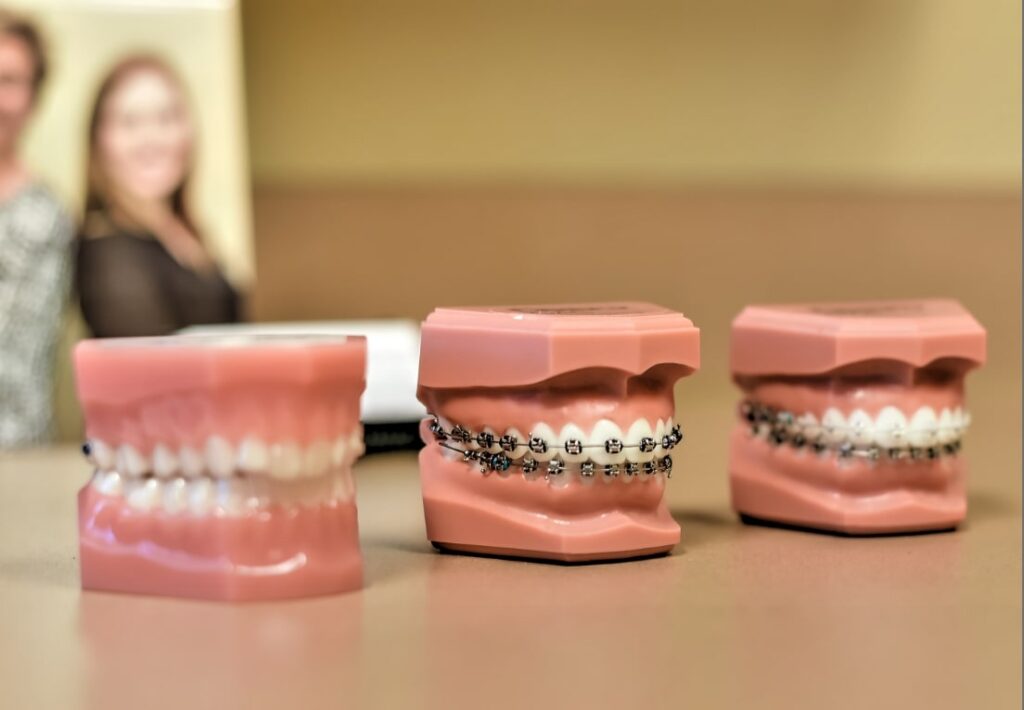Comprehensive Overview to Orthodontics Procedures for Remedying Oral Misalignments
In the world of orthodontics, the trip to achieving a completely straightened smile entails a myriad of procedures customized to fix oral misalignments. From conventional braces to unseen aligners and even surgical options, the area of orthodontics offers a range of options to deal with differing degrees of oral irregularities. Understanding the details of each procedure, including their systems, benefits, and possible disadvantages, is crucial in making informed choices regarding one's orthodontic treatment. As we navigate through the comprehensive guide to orthodontic treatments for fixing oral misalignments, the detailed details of each technique will unfold, losing light on the path towards a harmonious and functional oral placement.
Orthodontic Procedures Introduction

Regular modifications and monitoring are essential parts of orthodontic therapy to make sure progress is on track and to make any kind of necessary modifications along the means. By undertaking orthodontic treatments, clients can not only achieve a straighter smile yet additionally boost their overall dental wellness and feature.
Conventional Dental Braces: Just How They Function
When considering orthodontic therapies for oral misalignments, conventional dental braces stick out as a tried and true technique for correcting teeth placing. Standard dental braces consist of braces, wires, and bands that interact to apply constant stress on the teeth, gradually relocating them right into the wanted alignment. The braces are affixed to the teeth using an unique adhesive, and the cables are threaded via the braces. By adjusting the tension of the wires, orthodontists can manage the instructions and force used to each tooth, assisting them into correct alignment gradually.
One key element of how conventional dental braces work is the process of bone remodeling. As stress is related to the teeth through the braces, the bone surrounding the teeth is reshaped to sustain the new tooth placements. This remodeling is essential for the long-term stability of the fixed alignment. Patients will need regular changes at the orthodontist's office to make sure the dental braces remain to apply the right stress for efficient teeth movement.
Invisible Aligners: Disadvantages and pros
Unseen aligners use a discreet and convenient option to traditional braces for dealing with dental imbalances. These clear, custom-made trays are basically unseen when put on, making them an appealing option for people seeking an extra cosmetically pleasing orthodontic treatment. Among the key benefits of unseen aligners is their removability, enabling simpler upkeep of dental health compared to standard braces. Clients can get rid of the aligners before consuming or brushing their teeth, minimizing the threat of food obtaining stuck in the home appliance and simplifying the cleansing procedure.

Surgical Orthodontic Options
Surgical treatments in orthodontics present practical choices for attending to complex dental misalignments that may not be efficiently settled through conventional orthodontic therapies. While standard dental braces and unnoticeable aligners can correct many orthodontic issues, particular situations call for surgical intervention to achieve optimal results. Surgical orthodontic options are usually suggested for extreme malocclusions, considerable jaw inconsistencies, and instances where the underlying bone structure requires alteration to achieve discover this info here correct positioning.
One common surgical orthodontic procedure is orthognathic surgical procedure, which involves repositioning the jaws to deal with practical problems such as difficulty talking or chewing. This surgical treatment is commonly executed in collaboration with an orthodontist that aids line up the teeth before and after the procedure. Surgical orthodontics might also include treatments to expose influenced teeth, get rid of excess periodontal tissue, or reshape the jawbone to create a much more unified facial profile.
Prior to taking into consideration medical orthodontic choices, patients go through an extensive assessment to establish the necessity and prospective advantages of such interventions. cumming orthodontics. While surgical treatment might appear daunting, it can considerably boost both the feature and appearances of the smile in cases where standard orthodontic treatments drop short
Retainers and Post-Treatment Care

Post-treatment treatment involves complying with the orthodontist's directions faithfully. This might include correct dental hygiene methods, participating in follow-up appointments, and using the retainers as recommended. Failure to adhere to post-treatment treatment directions can result in relapse, where the teeth slowly return in the direction of their initial settings. Regular retainer wear, great dental health, and normal oral examinations are important for maintaining the results achieved with orthodontic surgical treatment and making sure the long-term security of the dealt with dental placement.
Conclusion
In verdict, orthodontic procedures provide different alternatives for remedying dental misalignments. Typical braces make use of metal braces and cords to change teeth into appropriate placement. Unnoticeable aligners supply a more very discreet choice however may not be ideal for all situations. Surgical orthodontic options are offered for a lot more extreme imbalances. Retainers are typically used post-treatment to keep the new positioning. Generally, orthodontic procedures can successfully boost dental wellness and visual appearance.
As we browse through the extensive guide to orthodontic treatments for correcting oral imbalances, the detailed details of each method will certainly unfold, shedding light on the course towards a functional and unified oral positioning. - orthodontist
One of the most usual orthodontic therapies is the usage of braces, which are composed of steel brackets and cables that apply mild stress to gradually move teeth right into the desired setting.When taking into consideration orthodontic treatments for dental imbalances, standard braces stand out as a time-tested approach for correcting teeth placing. Furthermore, unseen aligners may not be suitable for intricate orthodontic concerns that call for even more significant teeth activity, as they are typically recommended for light to modest cases. Retainers are custom-made orthodontic devices developed to hold teeth in their remedied settings after the completion of orthodontic treatment.